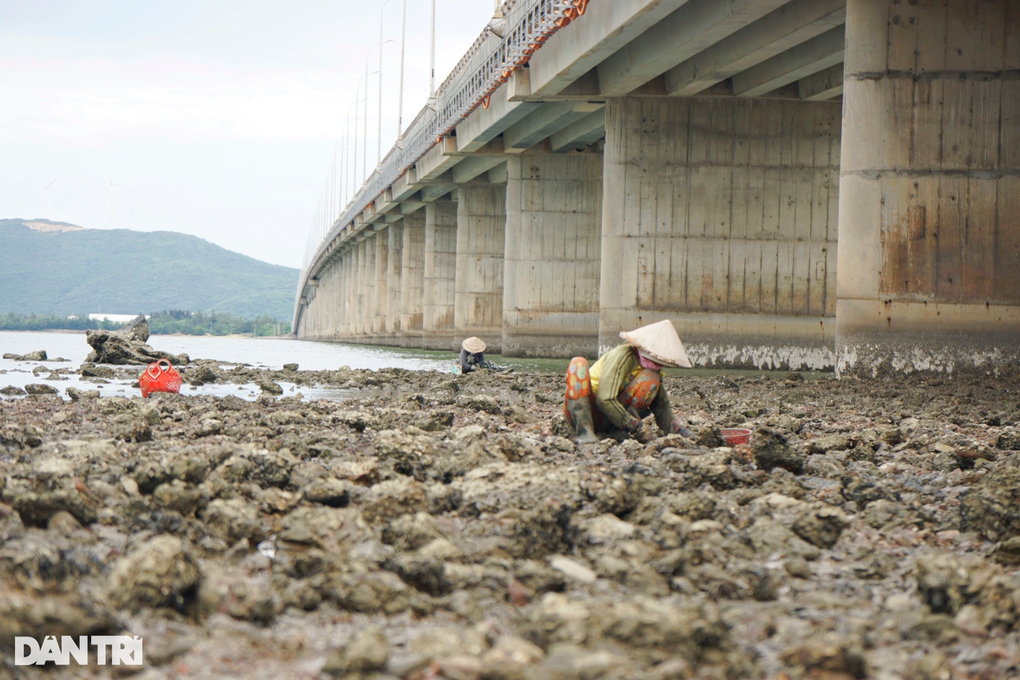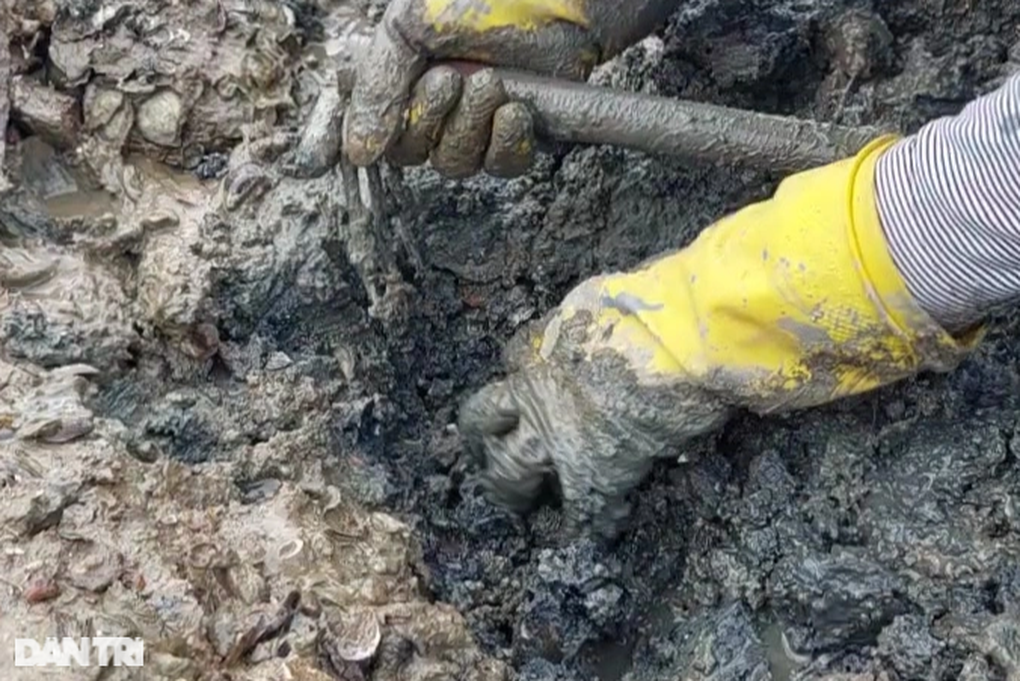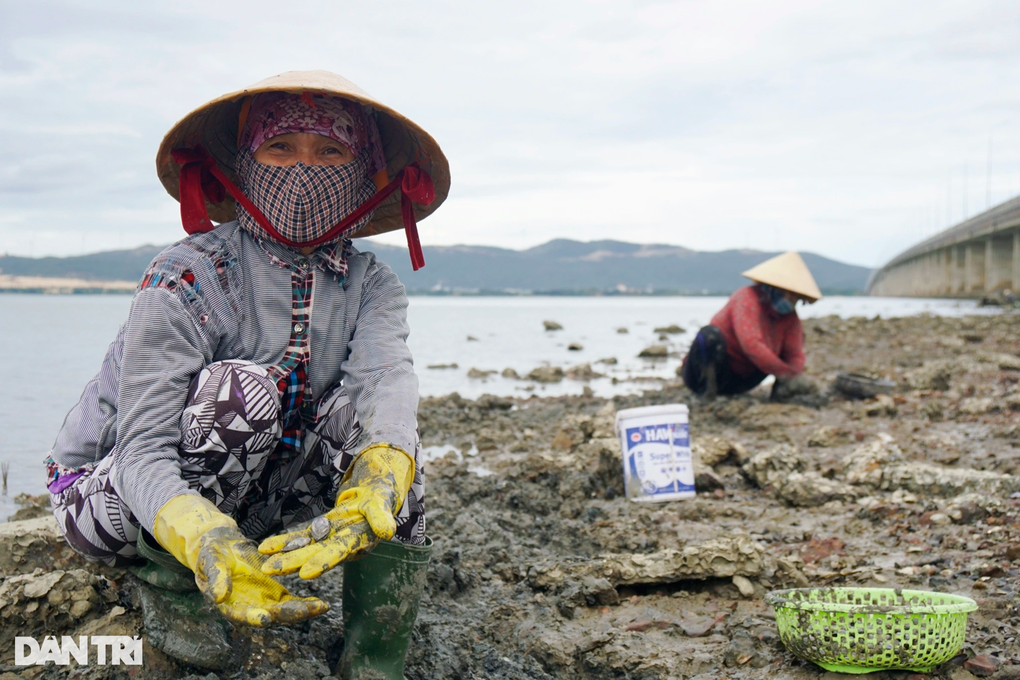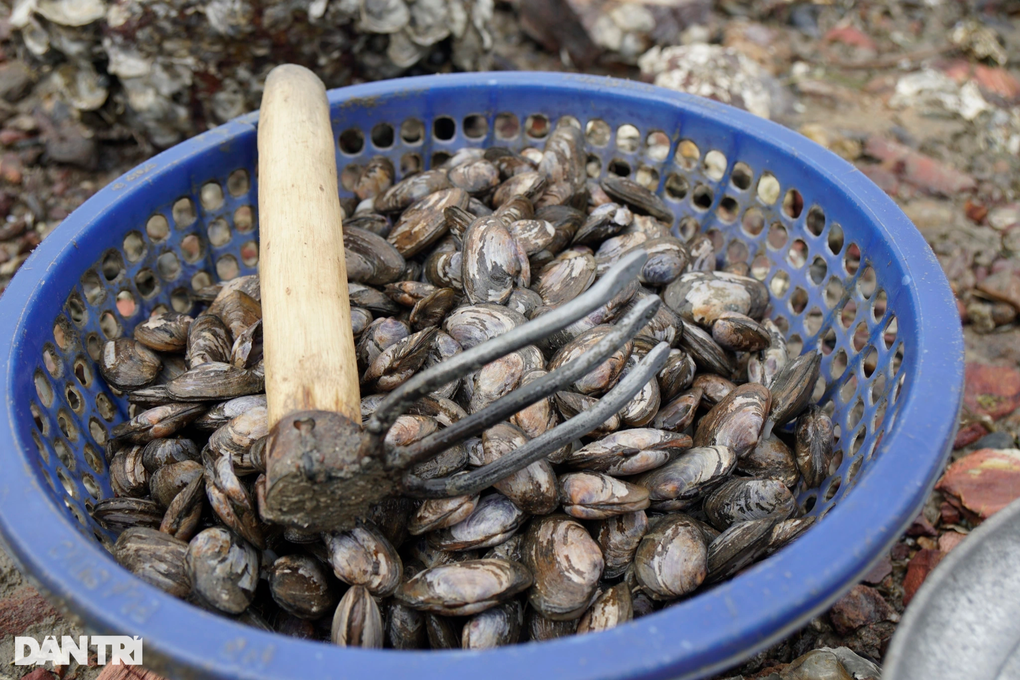Compass Travel Vietnam
My hands and feet are bleeding, searching for specialties in the “gold mine” of Thi Nai
Women over 50 years old, covered in mud after many hours of digging along the edge of Thi Nai lagoon, dig up small ponds as small as a thumb. The work is quite hard but the income is meager.
When the tide goes down, the coastal area of Thi Nai lagoon (Binh Dinh) reveals muddy mud flats, which is the time when many people rush to dig for phlox (a mollusk with two shells like a clam but with firm and delicious meat).

According to local people, depending on the month of the year, the water recedes at different times of the day. Therefore, fishermen in the coastal areas of the lagoon clearly understand this rule and wait for the water to recede to take advantage of the lagoon to dig.

As soon as the lagoon water receded, Ms. Le Thi My Hoa (58 years old, Nhon Binh ward, Quy Nhon city) and dozens of other women flocked to the section under Thi Nai bridge (also known as Nhon Hoi bridge, Quy Nhon city) to start making a living.
The difficult fate of women trying to make a living in Thi Nai lagoon (Video: Doan Cong).
Ms. Hoa said that this month, the water dried up around noon, around 8:00 a.m., the lagoon water began to slowly recede. By 12:00 noon, the area along the lagoon was bare bottom and the water was shallow for only 5-6 hours before rising again.

Wearing protective gear on both hands and feet, Ms. Hoa held a 3-toothed iron pickaxe, diligently and meticulously digging. Ms. Hoa’s eyes always had to “strain” to detect the small, thumb-sized worms mixed in the black mud and jagged stones.
“This job is not that hard, but sitting for 5-6 hours makes the body ache. If you are careless, sharp stones puncture your legs and arms, causing bleeding. Earning 100,000 VND a day is still very hard. When I get home early in the morning, I bring it to the market to pry and peel to get the meat separately to sell,” Ms. Hoa said.

Also according to Ms. Hoa, in the past, Thi Nai lagoon had not been sucked up with sand and mud to fill urban projects and residential areas along the lagoon. On average, people caught over 10kg each day, now the maximum is about 5kg. The selling price is 25,000-30,000 VND/kg, each session earns 100,000-150,000 VND, not half compared to previous years.

Worried about leaving early to pick up her grandchildren from school, Mrs. Muoi (62 years old, living in the same Nhon Binh ward) shared: “For generations, thousands of households living along Thi Nai lagoon have had a better life thanks to There are rich aquatic resources in the lagoon. Besides farming, whenever they have free time, she and her husband go to the lagoon to earn a living, thus raising their five children.”
After about 6 hours of being immersed in mud, Ms. Nguyen Thi Kim Loan and her husband Mr. Pham Van Thom (in area 4, Nhon Binh ward) could only dig about 10kg of pheasant.
“Many years ago, every session, my husband and I had to earn 600,000 VND, we were lucky to earn millions, but now we are very lucky to earn 300,000 VND. In the past two years, doing business in anything has been difficult, there is little to no money, let’s go. mason’s assistant, but at his old age he can’t do it. Furthermore, the construction industry is also in decline, many masons are unemployed because of people’s homes and businesses. ” Mr. Thom said.
Thi Nai lagoon is one of the four largest saltwater lagoons in Binh Dinh province, located in Quy Nhon city, Tuy Phuoc district and Phu Cat district. The lagoon has a water surface area of more than 5,000 hectares with many aquatic resources. For generations, Thi Nai lagoon has been like a “gold mine” for people to exploit and cultivate aquaculture products.
($1=24,000 VND)
Photo,Video: Internet (Vinlove.net)
The post My hands and feet are bleeding, searching for specialties in the “gold mine” of Thi Nai first appeared on Compass Travel Vietnam.
My hands and feet are bleeding, searching for specialties in the “gold mine” of Thi Nai
vinlove.
Source: vinlove









